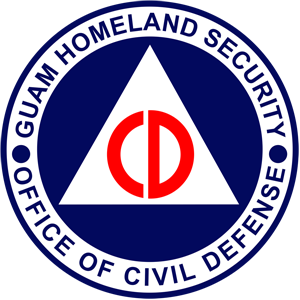X Flooding is a temporary overflowing of water onto land that is normally dry. Flooding may happen with only a few inches of water, or it may cover a house to the rooftop. There are many possible causes of floods including heavy rain, coastal storms and storm surge, waterway overflow from being blocked with debris, or overflow of levees, dams, or waste water systems. Flooding can occur slowly over many days or happen very quickly with little or no warning, called flash floods.
To learn more, visit
https://www.ready.gov/floods
X
Typhoons/Hurricanes are massive storm systems that form over the water and move toward land. Threats from typhoons/hurricanes include high winds, heavy rainfall, storm surge, coastal and inland flooding, and rip currents.
“Hurricanes” form in the Atlantic Northeast Pacific region and “Typhoons” form in the Northwest Pacific Region. These large storms are call cyclones in other parts of the world.
To learn more, visit
https://www.ready.gov/hurricanes.
X Hazardous materials come in the form of explosives, flammable and combustible substances, poisons and radioactive materials. Hazards can occur during production, storage, transportation, use, or disposal. You and your community are at risk if a chemical is used unsafely or released in harmful amounts in the environement where you live, work or play.
Visit our page, specific to Rad/Nuc, WMD and HazMat Preparedness
X Department of Homeland Security (DHS) Definition of Terrorism
Under Section 2 of the Homeland Security Act of 2002:
The term ‘‘terrorism’’ means any activity that— (A) involves an act that— (i) is dangerous to human life or potentially destructive of critical infrastructure or key resources; and (ii) is a violation of the criminal laws of the United States or of any State or other subdivision of the United States; and (B) appears to be intended— (i) to intimidate or coerce a civilian population; (ii) to influence the policy of a government by intimidation or coercion; or (iii) to affect the conduct of a government by mass destruction, assassination, or kidnapping.
To learn more, visit
https://www.dhs.gov/topic/preventing-terrorism and
https://www.dhs.gov/national-terrorism-advisory-system
X Tsunamis, also known as seismic waves (mistakenly called “tidal waves”), are a series of enormous waves created by an underwater disturbance such as an earthquake, landslide, volcanic eruption, or meteorite. Earthquake-induced movement of the ocean floor most often generate tsunamis. If a major earthquake or landslide occurs close to shore, the first wave in a series could reach the beach in a few minutes, even before a warning is issued.
To learn more, visit our
Tsunami Page and
https://www.ready.gov/tsunamis.







